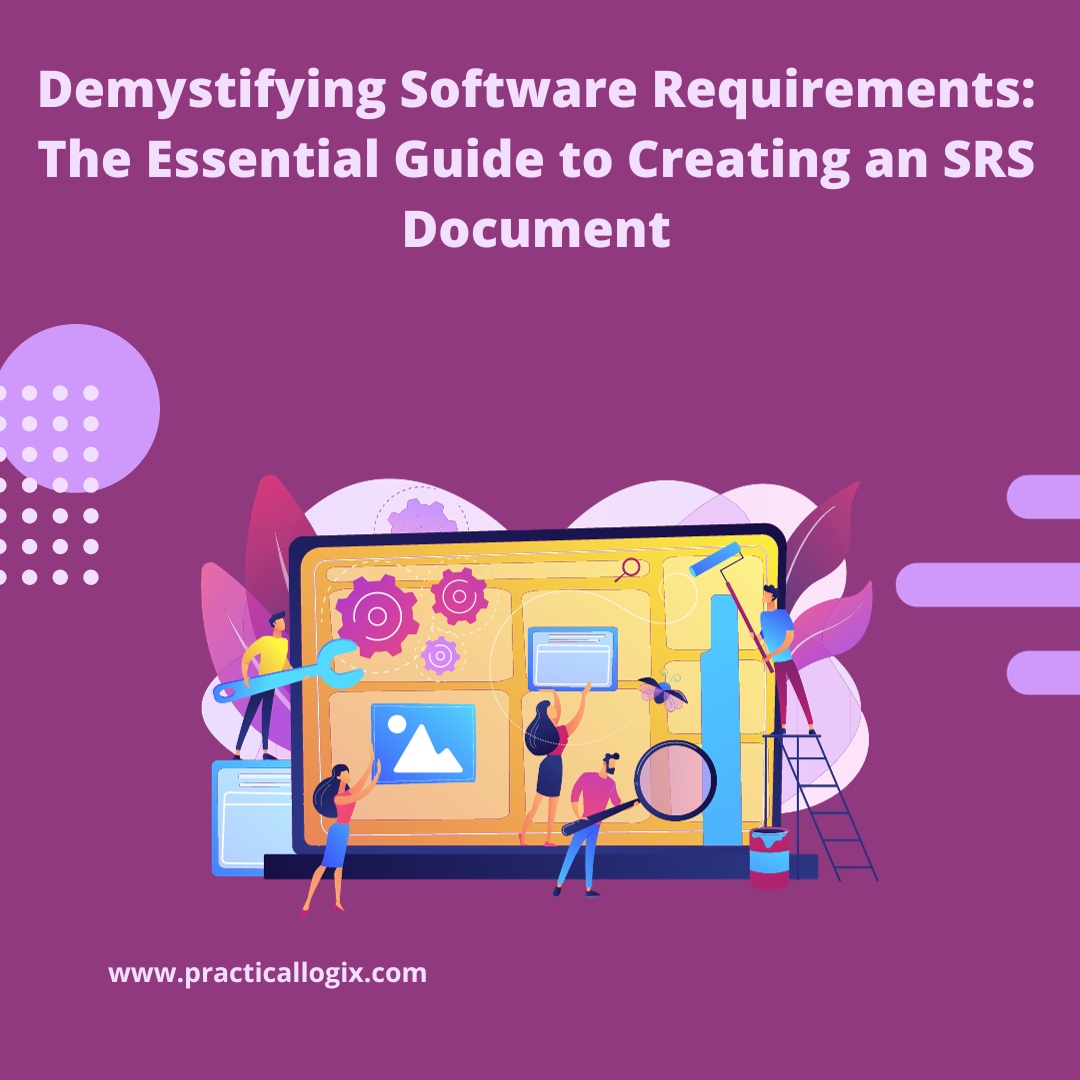In the realm of software development, the clarity and completeness of software requirements often determine the success of a project. Software Requirements Specification (SRS) documents serve as the foundation, providing a comprehensive blueprint of what needs to be built. This article aims to demystify the SRS document, offering an indispensable guide to creating one that can steer your project towards success.
Understanding the SRS Document
An SRS document entails a meticulous description of a software system's functional and non-functional requirements. It acts as a vital communication tool among stakeholders, including clients, developers, testers, and project managers. Crafting a well-defined SRS document is crucial in averting misunderstandings, mitigating project risks, and ensuring that the software aligns with the client's expectations.
Key Elements of an SRS Document
Developing a comprehensive SRS document entails incorporating specific elements that encompass all aspects of the software project. Below are the essential components to consider:
1. Introduction:
The introduction section presents an overview of the SRS document, including its purpose, scope, and relevant references.
2. Project Scope:
Define the project's boundaries by specifying the software's inclusions and exclusions. This section aids in managing expectations and preventing scope creep.
3. Functional Requirements:
Functional requirements describe the system's features, interactions, and behaviors. Utilize use cases, user stories, or flowcharts to illustrate the software's functioning.
4. Non-Functional Requirements:
Non-functional requirements encompass qualities such as performance, scalability, security, and usability. These are equally significant as functional requirements and should not be overlooked.
5. System Architecture:
This section provides an overview of the software's architecture, including its components, databases, and interfaces. Diagrams and system diagrams can aid in visualizing the structure.
6. Data Requirements:
Specify the data that the system will use or produce. Include details about data models, data flow, and storage.
7. User Interface (UI) Design:
Describe the software's user interface elements, layout, and design principles. Include wireframes, mockups, or design concepts as necessary.
8. Constraints:
Enumerate any limitations or constraints that may impact the project, such as budget, time, or technological constraints.
9. Assumptions and Dependencies:
Document any assumptions made during the creation of the SRS and dependencies on external systems or components.
10. Compliance and Standards:
If the software must adhere to specific industry or regulatory standards, outline these requirements in this section.
Creating an Effective SRS Document
Now that you have a firm grasp of the key elements of an SRS document, here are some valuable tips to assist you in crafting an impactful one:
1. Engage Stakeholders:
Collaborate closely with all relevant stakeholders, including clients, end-users, and the development team. Seek their input and feedback to ensure that the document accurately reflects their needs and expectations.
2. Utilize Clear and Concise Language:
Avoid technical jargon that may confuse non-technical stakeholders. Instead, employ clear and plain language to effectively communicate requirements.
3. Be Specific and Comprehensive:
The more specific and detailed your SRS document is, the fewer ambiguities and misunderstandings you will encounter during the development process.
4. Prioritize Requirements:
Recognize that not all requirements hold equal importance. Prioritize them based on their potential impact on the project's overall success.
5. Maintain Regular Updates:
As the project progresses, it is crucial to keep the SRS document up to date. Regularly review and revise it to reflect any changes or newfound insights.
6. Conduct Thorough Reviews and Validation:
Engage relevant stakeholders in reviewing the SRS document to validate its accuracy and completeness. This meticulous review process can help identify any missing or conflicting requirements.
7. Leverage Tools and Templates:
Take advantage of the diverse range of software tools and templates available to streamline the creation process of the SRS document. These resources can ensure consistency and save valuable time.
Conclusion
Developing an effective Software Requirements Specification (SRS) document is a crucial step in any software development project. It serves as a communication tool to ensure a shared understanding of the software's objectives among project stakeholders. A well-crafted SRS document plays a vital role in mitigating misunderstandings, minimizing project risks, and ensuring the software meets client expectations. By adhering to the key elements and tips outlined in this guide, you can demystify the process of creating an SRS document and set your software project on the path to success. Therefore, when embarking on a software development journey, always remember that a clear and comprehensive SRS document serves as your roadmap to success.


No comments yet